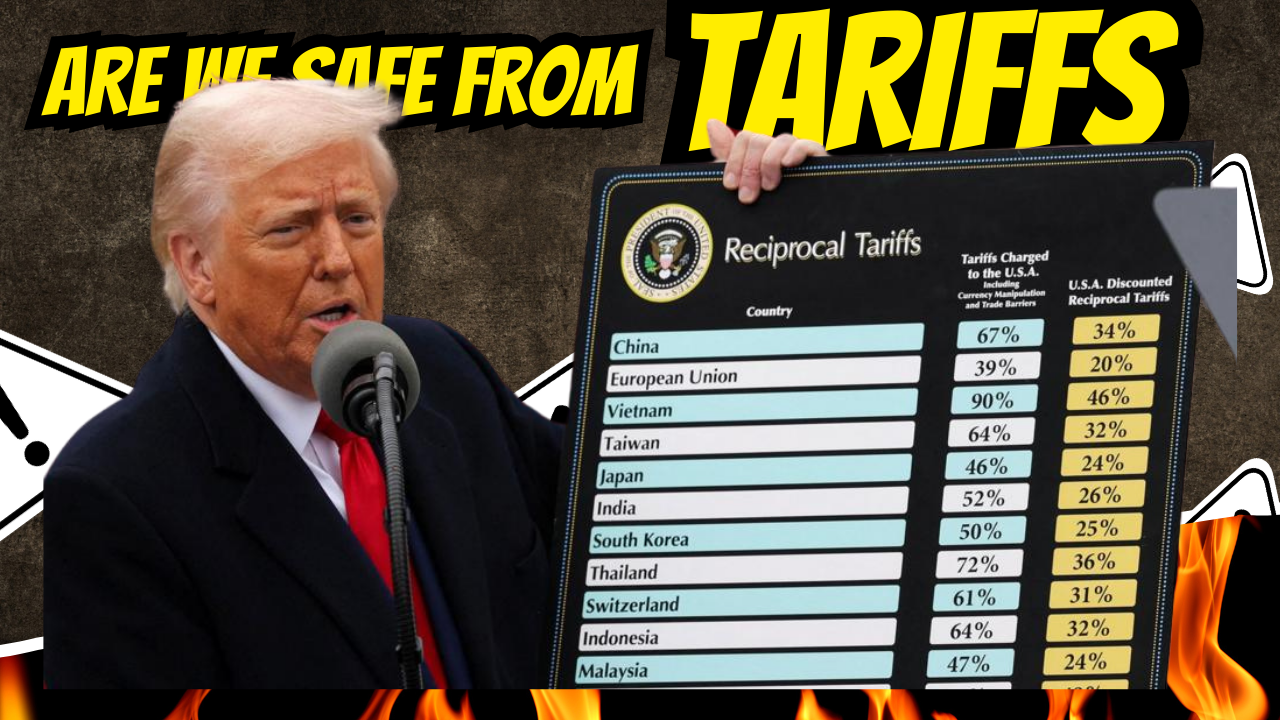The Hidden War on American Agriculture
In the heart of America’s sprawling fields and on the cusp of urban sprawl, a silent war is being waged that very few people are making public. This battle, largely unnoticed by the average consumer, targets the very backbone of America’s food sovereignty and security: it’s the agricultural community. At the forefront of this conflict is the beef industry, ensnared in a web of environmental regulations and corporate control that threatens not just the livelihood of small farmers but the nation’s ability to sustain itself.
The Unseen Battle for Food Sovereignty
The concept of food sovereignty represents a transformative approach to food, agriculture, and societal structures, advocating for the right of people to define their own food systems. In the United States, this battle for food sovereignty is both critical and complex, reflecting a mosaic of cultural, economic, and environmental concerns.
Food sovereignty in the U.S. challenges the prevailing industrial agriculture model, which is often characterized by monocultures, heavy reliance on chemical inputs, and centralized control by a few corporations. This model not only contributes to environmental degradation but also undermines local food systems and diminishes the diversity of diets. The push for food sovereignty seeks to reclaim the power to produce, distribute, and consume food in ways that are ecologically sound, culturally appropriate, and sustainable.
Central to the American food sovereignty movement is the emphasis on democratic control over food and agricultural systems. This entails resistance to corporate domination and neoliberal policies that prioritize profit over people and the planet. By advocating for systems that are equitable and rooted in community needs, food sovereignty aims to restore relationships between people, their food, and the land.
The USDA Indigenous Food Sovereignty Initiative highlights aspects of this movement, focusing on promoting traditional foodways and supporting Indigenous health through foods tailored to American Indian/Alaska Native dietary needs. This initiative underscores the importance of preserving cultural heritage and knowledge in food production, which is a cornerstone of food sovereignty.
Moreover, organizations like the US Food Sovereignty Alliance and the Native American Food Sovereignty Alliance (NAFSA) play pivotal roles in advocating for these changes. They work to rebuild relationships with the land, water, plants, and animals that sustain communities, emphasizing Indigenous self-determination, wellness, and economic independence.
In practice, food sovereignty in the U.S. involves supporting local farms, encouraging biodiversity in crops, and fostering systems where farmers and consumers have a voice in how food is grown, distributed, and consumed. It’s about creating food systems that are fair, healthy, and accessible to all, challenging the status quo of food production and distribution.
This unseen battle for food sovereignty is a call to action for all Americans to rethink their relationship with food, support local and Indigenous food systems, and advocate for policies that promote organic sustainability vs. corporate equity sustainability (I just made that up), where the meats are imported from China, etc. and then cut and packaged here and slapped with a “USA” label on them only because they were packaged here… It’s a movement towards a future where food is a common good rather than a commodity controlled by the few, ensuring that all people have access to nutritious, culturally relevant, and sustainably produced food.
The Rise of Anti-Animal Ideology
The rise of anti-animal agriculture ideology in the United States and globally represents a significant shift in societal attitudes towards farming practices, particularly those involving animals. This movement, deeply rooted in governmental interference cites ethical, environmental, and health concerns, for their green initiatives that challenge the conventional methods of animal farming and advocate for a radical transformation of our food systems, not for the better.
At the heart of the anti-animal agriculture ideology is a critique of rural farming and a focus on industrial farming practices. Critics argue that these rural farms are causing irreparable damage and environmental degradation because of bovine flatulence (for one example) and believe it is a public health issue. Conversely, publications such as the Guardian, in a compelling critique, label industrial farming as one of the worst crimes in history, highlighting the ethical dilemmas posed by such practices of mass cattle and poultry farming, as examples.
The green agenda’s philosophical ethics further bolster the arguments against rural animal agriculture. Personally, I’ve never been bothered by bovine flatulence. However, I have been in a few dairy barns, and while they didn’t smell all that good, I still enjoyed the milk, and continue to enjoy the milk.
Organizations like The Humane League have also highlighted the problems associated with factory farming, emphasizing its role in perpetuating animal cruelty, environmental damage, and risks to human health through the spread of zoonotic diseases and antibiotic resistance. This is a real issue. This growing awareness has led to a push for legislative changes, consumer shifts towards plant-based diets, and increased support for sustainable and humane farming practices.
Moreover, research published in journals such as Nature suggests that changing social norms around meat consumption and animal welfare could play a crucial role in protecting farm animals and promoting more ethical food choices among consumers.
In essence, the rise of anti-animal agriculture ideology reflects a growing consensus on the need for a more get-back-to-basics, sustainable, and health-conscious approach to food production. It challenges individuals and societies to reconsider their dietary choices, and where their food really comes from. I.e China, or the farm down the road a bit. Advocating for a future of animal farming, where all beings can thrive, I believe we have to back to the basics.
The Corporate Grip on Agriculture
The corporate grip on agriculture has significantly reshaped the landscape of farming in the United States, leading to profound implications for farmers, consumers, and the environment. This consolidation of power within the agricultural sector is not a recent phenomenon but the culmination of decades of mergers, acquisitions, and policy shifts favoring large agribusinesses over small family farms.
A handful of corporations now control a significant portion of the food system “from farm to fork,” as Farm Aid points out. This unchecked corporate power reduces options for consumers to support good food from family farmers and pushes independent family farms out of business. The dominance of these corporations extends across the entire food chain, including seeds, pesticides, processing, and distribution, leaving farmers with fewer choices and greater dependency on corporate products and terms.
The National Family Farm Coalition highlights agriculture as one of the most concentrated sectors of the U.S. economy. The disappearance of tens of thousands of independent family farms over the last few decades has not only led to their land and operations being absorbed by ever-larger farms but has also eroded the fabric of rural communities. These communities, once anchored by family farms, find themselves hollowed out as jobs disappear and local economies weaken.
Corporate control extends deeply into the inputs used in farming, with “six corporations — Monsanto, DuPont, Dow, Syngenta, Bayer, and BASF — controlling 75 percent of the world’s pesticides market,” according to Greenpeace USA. This concentration of power affects not just the availability and price of agricultural inputs but also the direction of agricultural research and policy, often in ways that prioritize corporate interests over environmental sustainability and public health.
The consolidation in the livestock industry is particularly striking, with a relative handful of large entities controlling the majority of slaughter, processing, and marketing of livestock. This has squeezed out small farms, reduced competition, and led to a system where factory farms dominate, contributing to environmental degradation and raising ethical concerns about animal welfare.
The corporate control of agriculture necessitates a critical examination of our food systems and calls for concerted efforts to support policies and practices that promote diversity, sustainability, and fairness. Advocating for antitrust enforcement, supporting local food systems, and demanding transparency and accountability from agribusinesses are essential steps in loosening the corporate grip on agriculture and ensuring a resilient and equitable food future.
The Threat to Small Farms and National Sovereignty
The plight of small farms in the United States is a pressing issue that underscores a broader crisis in American agriculture. As the agricultural landscape becomes increasingly dominated by large agribusinesses, small family farms face mounting challenges that threaten their survival and, by extension, the nation’s food sovereignty.
The Crisis Facing Small Farms
The crisis facing small farms in the United States is both deep-rooted and multifaceted, reflecting broader systemic issues within the agricultural sector and the economy. Small farms, traditionally the backbone of American agriculture, are increasingly finding themselves on the brink of extinction, squeezed out by the relentless pressures of industrial farming, economic challenges, and policy frameworks that favor large-scale operations over the small, family-run farms that have historically fed the nation.
Economic Pressures
One of the most immediate challenges facing small farms is the economic pressure exerted by the consolidation of the agricultural industry. As large agribusinesses grow ever larger, benefiting from economies of scale and preferential policy treatment, small farms struggle to compete. This competition is not just about market share; it’s about survival. Small farms often lack the financial buffer to withstand poor crop yields, price fluctuations in the market, and the high costs of modern farming equipment and technology. The debt crisis among American farmers, as reported by Time, is a testament to this struggle, with many farmers taking on unsustainable levels of debt in an attempt to keep their operations afloat.
Market Access and Fair Pricing
Access to markets is another critical issue. The dominance of large corporations in food processing and distribution means that small farmers often find themselves at a disadvantage when it comes to selling their produce, meats, dairy, etc. These corporations can dictate terms and prices, leaving small farmers with slim margins—if they can find a market at all. The situation is exacerbated by the global nature of food markets, where local farmers not only compete with each other but with international producers who may benefit from lower production costs.
Policy and Regulatory Challenges
Policy and regulatory frameworks in the United States have not always favored small farms. Subsidies, grants, and other forms of government support often go to larger operations, based on the volume of production rather than the size of the farm. This creates a vicious cycle where small farms, unable to compete financially, miss out on the very support that could help them become more competitive and grow… Moreover, the regulatory burdens can disproportionately affect small farms, which may not have the resources to navigate complex bureaucratic requirements as easily as their larger counterparts.
Environmental and Social Impacts
The crisis facing small farms also has significant environmental and social implications. Small farms are more likely to use sustainable farming practices, preserve biodiversity, and maintain the health of the soil and local ecosystems. Their decline not only impacts the environment but also the rural communities, where small farms often have served as economic and social anchors. The loss of small farms contributes to the decline of rural areas, leading to job losses, school closures, sales to real estate developers, and a decrease in community cohesion.
The Path Forward
Addressing the crisis facing small farms requires a multifaceted approach that includes policy reform, economic support, and a shift in consumer behavior. Policies that provide targeted support to small farms, promote fair pricing and ensure access to markets are crucial. Economic support could include grants, low-interest loans, and debt relief programs specifically designed for small operations. Finally, consumers can play a role by supporting local farms through direct purchases, farmers’ markets, and community-supported agriculture (CSA) programs.
The crisis facing small farms is a complex issue with no easy solutions in the wake of the conglomerate dollars that buy space on the grocery store shelves. However, the survival of these farms is crucial for the sustainability of the agricultural sector, the health of the environment, and the vitality of rural communities across the United States.
The Threat to Our National Sovereignty
The threat to national sovereignty posed by the decline of small farms and the consolidation of agricultural production into the hands of a few large corporations extends beyond the immediate economic implications for rural communities. It strikes at the heart of a nation’s ability to control and secure its food supply, a fundamental aspect of sovereignty and independence. This issue has become increasingly critical in the context of global instability, climate change, and rising geopolitical tensions, which underscore the importance of maintaining a resilient and self-sufficient agricultural sector.
Dependence on Global Markets
As small farms disappear and agricultural production becomes more concentrated, the United States finds itself increasingly reliant on global markets for its food supply. This dependence on international trade for essential goods can make the nation vulnerable to supply chain disruptions caused by geopolitical conflicts, trade disputes, or global pandemics. The recent COVID-19 China debacle highlighted these vulnerabilities, as disruptions in global supply chains led to shortages and increased prices for various goods, including food products that needed to continue to be shipped across the ocean and processed and packaged here.
Loss of Agricultural Biodiversity
The consolidation of agriculture also threatens the biodiversity of the nation’s food supply. Large agribusinesses tend to favor monoculture practices and the cultivation of a limited number of high-yield crops. This approach, while economically efficient in the short term, reduces genetic diversity and makes crops more susceptible to pests, diseases, and changing climate conditions. Small farms, on the other hand, often practice more diverse and sustainable farming methods that contribute to the resilience of the food system. The loss of these farms diminishes the nation’s agricultural biodiversity, undermining long-term food security.
Erosion of Rural Economies and Communities
The decline of small farms contributes to the erosion of rural economies and communities, weakening the social fabric of vast swathes of the country. Rural areas, traditionally supported by agriculture, face economic decline, population loss, and a reduction in public services as small farms close down. This not only impacts the livelihoods of individuals living in these areas but also diminishes the nation’s ability to cultivate a new generation of farmers. This is a real issue. The weakening of rural communities threatens the country’s agricultural future and, by extension, its sovereignty over food production long term…
Policy Implications
To address the threat to national sovereignty, policymakers must consider agricultural policy not just in terms of economic efficiency but as a matter of national security. This includes supporting policies that promote the viability of small farms, such as fair trade practices, subsidies, and research into sustainable agriculture. Additionally, policies aimed at encouraging local food systems and reducing dependence on global supply chains can enhance food security and resilience. This is hard to do when organizations such as Monsanto seem to have an unlimited amount of money to lobby the federal government.
The Role of Consumers
Consumers also play a crucial role in supporting national sovereignty through their food choices. By choosing locally produced foods, participating in community-supported agriculture (CSA) programs, and advocating for food policies that support small farms, consumers can help build a more resilient and sovereign food system. This is especially true of the preparedness community…
The threat to national sovereignty posed by the decline of small farms and the consolidation of agricultural production is a complex issue that requires a coordinated response from policymakers, the agricultural sector, and consumers. Addressing this threat is essential for ensuring the long-term security, sustainability, and independence of the nation’s food supply. This brings us to the Role of Policy and Public Support…
The Role of Policy and Public Support
The role of policy and public support in bolstering small farms and ensuring the sustainability of the agricultural sector cannot be overstated. As small farms face an array of challenges, from economic pressures to competition with large agribusinesses, targeted policy interventions and robust public support emerge as crucial lifelines. These measures not only aid in preserving the livelihoods of small farmers but also contribute to broader goals of food security, environmental sustainability, and rural vitality.
Policy Interventions
Policy interventions play a pivotal role in creating a conducive environment for small farms to thrive. The United States Department of Agriculture (USDA) offers various resources for small and mid-sized farmers, including access to capital, risk management tools, and conservation programs. These resources are designed to address the unique challenges faced by small farms, providing them with the financial and technical support necessary to remain competitive and sustainable.
The Scholars Strategy Network highlights how agricultural policies can support new American farmers, emphasizing the need for policies that facilitate access to land, capital, and markets for beginning and socially disadvantaged farmers. This includes programs that offer training, mentorship, and financial assistance to those looking to enter the agricultural sector, ensuring a diverse and resilient farming community.
The Center for Rural Affairs argues for Congress to adopt policies that specifically support small farms, advocating for farm bill provisions that prioritize conservation, local food systems, and fair access to markets. Such policies can help level the playing field, allowing small farms to compete more effectively with larger operations.
Public Support
Public support is equally critical in sustaining small farms. Consumers have a powerful role to play in supporting local agriculture through their purchasing decisions. By choosing locally produced foods, participating in community-supported agriculture (CSA) programs, and frequenting farmers’ markets, consumers can directly contribute to the economic viability of small farms.
Moreover, public advocacy for agricultural policies that favor small-scale, sustainable farming practices can influence legislative priorities and outcomes. Grassroots movements and consumer demand for sustainable and ethically produced food can drive policy changes that support small farms and environmental stewardship.
The combined efforts of policy interventions and public support are essential in addressing the multifaceted challenges faced by small farms. By implementing targeted policies that provide financial, technical, and market access support, and fostering a culture of public support for local agriculture, it is possible to ensure the survival and prosperity of small farms. These efforts not only benefit the farmers themselves but also contribute to the broader goals of food sovereignty, environmental sustainability, and rural community resilience.
In essence, the future of small farms—and, by extension, the agricultural landscape of the United States—hinges on a concerted effort from both policymakers and the public to champion the cause of sustainable, small-scale farming.
The Call to Action for the Preparedness Community (and Humanity)
In the face of the challenges confronting small farms and the broader agricultural sector, the preparedness community stands in a unique position to make a significant impact. This community, deeply aware of the importance of resilience and self-sufficiency, can play a pivotal role in supporting sustainable agriculture and ensuring food security. The call to action for this community is not just about preparing for individual or family emergencies but about contributing to the resilience of the entire food system.
Support Community Supported Agriculture (CSA)
One of the most direct ways the preparedness community can support sustainable agriculture is through participation in Community Supported Agriculture (CSA) programs. CSAs represent a partnership between farmers and consumers in which consumers annually purchase “shares” of a farm’s harvest in advance. This model provides farmers with upfront capital, reduces the risks associated with food production, and ensures a market for their produce. For the preparedness community, CSAs offer a reliable source of local, seasonal food, strengthening the connection between consumers and their food sources. The National Agricultural Library and resources like LocalHarvest provide extensive information on finding and joining CSAs, making it easier for individuals to support local farms.
Engage in Rural Community Resilience Efforts
The USDA’s launch of a resource guide to help rural communities seeking disaster resiliency and recovery assistance underscores the importance of community-level efforts in building agricultural resilience. The preparedness community, with its emphasis on planning and self-reliance, can contribute valuable skills and knowledge to these efforts. By engaging in local resilience planning, preparedness enthusiasts can help ensure that rural communities and small farms are better equipped to handle the challenges posed by climate change, economic fluctuations, and other threats.
Advocate for Policy Change
Advocacy for policy changes that support small farms and sustainable agriculture is another critical area where the preparedness community can make a difference. This includes supporting policies that provide fair pricing, access to markets, and financial assistance for small farmers. By lending their voices to the call for a more equitable and sustainable agricultural policy, members of the preparedness community can help shape a food system that prioritizes resilience, biodiversity, and local economies.
Educate and Spread Awareness
Finally, education and awareness-raising are vital. The preparedness community can help spread the word about the importance of supporting small farms, the benefits of sustainable agriculture, and the threats to food sovereignty. By sharing knowledge through workshops, social media, and community meetings, preparedness enthusiasts can inspire others to take action and contribute to a broader cultural shift towards valuing and supporting the agricultural practices that will sustain future generations.
The preparedness community has a significant role to play in supporting small farms and ensuring the resilience of the food system. Through direct support for CSAs, engagement in community resilience efforts, advocacy for policy change, and education, this community can contribute to a more sustainable, secure, and sovereign agricultural future.
Supporting Local Agriculture and Advocacy
Supporting local agriculture is a multifaceted endeavor that extends beyond the simple act of buying local produce. It involves a commitment to sustaining the agricultural community, advocating for policies that support small farms, and engaging in practices that foster a resilient local food system. Here are several strategies for supporting local agriculture and advocacy, drawing from various sources and ideas that have proven effective in strengthening local food systems.
1. Participate in Community Supported Agriculture (CSA)
Joining a CSA is a direct way to support local farmers. By purchasing a share of a farm’s harvest in advance, consumers can provide farmers with much-needed upfront capital, reducing their financial risk and ensuring a market for their produce. This model fosters a closer connection between consumers and their food sources, promoting a deeper understanding of seasonal eating and the challenges faced by farmers.
2. Shop at Farmers’ Markets and Local Farm Stands
Shopping at farmers’ markets and local farm stands not only supports local farmers but also reduces the carbon footprint associated with transporting food long distances. It encourages the consumption of fresh, seasonal produce and provides an opportunity for consumers to learn more about the food they eat and the people who grow it.
3. Advocate for Local Food in Schools and Institutions
Advocating for the inclusion of locally sourced food in schools, hospitals, and other institutions can significantly impact local agriculture. This not only supports local farmers by expanding their market but also improves the nutritional quality of food served in these settings. Engaging with school boards, local governments, and institutional decision-makers can help drive this change.
4. Support Land Preservation Efforts
Supporting land preservation efforts is crucial for protecting farmland from development and ensuring the long-term viability of agriculture. This can involve advocating for policies that prioritize farmland conservation, supporting local land trusts, and raising awareness about the importance of preserving agricultural land for future generations.
It should be noted that land trusts are not always advantageous for communities. Here are some of the downfalls of a land trust below. That said, while I know it can be difficult, the land owner can preserve the land by passing it down to their family who choose not to partake in a trust. Check out the list below.
- Limited Development Opportunities: Once land is conserved, it is generally protected from development permanently. This can limit opportunities for housing or commercial development, which may be seen as a disadvantage in areas facing housing shortages or seeking economic growth through development. If you strike oil or find natural gas on your conserved property, you may be limited in how you can develop the property to generate income.
- Management and Maintenance Costs: Conserving and managing land can be costly. Land trusts must secure funding for ongoing maintenance, management, and legal defense of the conserved lands, which can be challenging.
- Conflicts with Local Interests: In some cases, the goals of land trusts may conflict with local interests if the landowners desire to keep their property from being developed. Balancing conservation efforts with the needs and rights of local communities and landowners can be challenging, especially with urban sprawl moving in a suburban and rural direction at an accelerated rate.
- Accessibility, Governmental Equity, and the Equity Concerns of Misled Organizations: While many land trusts aim to provide public access to conserved lands, issues of accessibility and “equity” can arise. The rise of equity in this period of wokeness tries to ensure that all community members have equal opportunities to enjoy and benefit from the conserved lands that they have no ownership in, and is an ongoing challenge.
- Volunteer and Donate: Volunteering with local agricultural organizations or donating to causes that support small farms can make a significant difference. Many non-profits work to promote sustainable agriculture, support farmer training programs, and advocate for farmer-friendly policies. Offering time or financial support to these organizations helps amplify their impact.
6. Educate Yourself and Others: Educating yourself about the challenges and opportunities in local agriculture allows you to be a more informed consumer and advocate. Sharing this knowledge with others can help build a community of support for local farms, increasing their ability to thrive in a competitive market.
By adopting these practices, individuals and communities can play a vital role in supporting local agriculture, ensuring the sustainability of small farms, and promoting food sovereignty. The collective effort to support local agriculture not only benefits farmers but also contributes to the health and resilience of the entire community.
Conclusion
The war on American agriculture is a complex and pressing issue that requires widespread awareness and action. The preparedness community and concerned citizens play a vital role in preserving food sovereignty and supporting the survival of small farms. By taking concrete steps to educate themselves, engage in local advocacy, and support policies that protect agricultural freedoms, individuals can contribute to the fight against the threats facing American agriculture.
You’ll note as well there was no discussion here of “synthetic lab-grown meat” which is on the horizon and being pushed as sustainable, which, in my humble opinion, could be further from the truth. This is a subject for a blog post of its own in the future to complement this one.
My Call to Action for You
To combat the hidden war on American agriculture, it is imperative that we take action. Educate yourself on these issues, engage in local advocacy, and support policies and practices that protect agricultural freedoms. Support local farmers and ranchers by buying locally produced food and participating in CSA programs. Together, we can preserve food sovereignty and ensure the survival of small farms for future generations.
Resources
- United States Department of Agriculture (USDA): Offers comprehensive data and reports on the state of American agriculture, small farms, and the impact of policy changes.
- National Sustainable Agriculture Coalition (NSAC): Provides insights and advocacy on issues affecting sustainable agriculture and small farms.
- Farm Aid: An organization dedicated to keeping family farmers on the land, offering resources and support for farmers, and information on the challenges they face.
- Food and Agriculture Organization of the United Nations (FAO): For global perspectives on agriculture, food security, and sustainable practices.
- The Good Food Institute: Offers research and information on plant-based diets, synthetic meat, and the future of food.
- Harvard Law School’s Animal Law & Policy Program: Provides analyses on legal and policy issues related to animal agriculture and alternatives.
- Local Harvest: A directory for finding local food, CSAs, and farmers markets.
- Community Supported Agriculture (CSA) Directories: Many regions have their own CSA directories that list local farms offering shares to the public.
- American Farmland Trust: Works to preserve agricultural land and promote farming practices that lead to a sustainable future.
- Academic Journals: Journals such as “Agriculture and Human Values”, “Journal of Rural Studies”, and “Environmental Science & Policy” often publish research on agriculture, sustainability, and policy.
- Government Reports and Legislation: Looking into recent farm bills, USDA reports, and state-level agriculture policies can provide insights into the legal and economic framework affecting agriculture.








